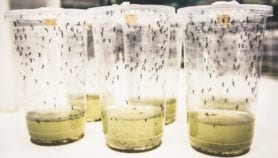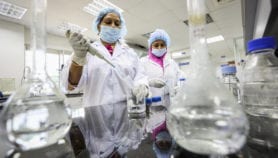Send to a friend
The details you provide on this page will not be used to send unsolicited email, and will not be sold to a 3rd party. See privacy policy.
Below is a roundup of news from or about South Asia for the period: 26 November–9 December 2009
Most of Bangladesh’s forest cover lost
About 95 per cent of Bangladesh’s natural forests and half of its freshwater wetlands are lost or degraded, according to a USAID report. Additionally, many of the country’s terrestrial wildlife species have been lost. Bangladesh is highly vulnerable to the impacts of climate change, because of its location on the world’s largest delta, the report says. More>>
Mangrove forest plays role in ozone control
An Indian research team has shown how tropical mangrove forest plays a role in maintaining a low-ozone state along the northeast coast of Bay of Bengal. During the post-monsoon period, mangroves absorb nitrogen from both the soil and the atmosphere, the researchers found. More>>
Dutch support for Pakistan’s biogas plants
Pakistan is set to get technical support from the Netherlands for setting up domestic biogas plants in order to reduce carbon dioxide emissions. An agreement was signed by officials from Pakistan and the Netherlands in Islamabad on 2 December, and US$3.8 million has been agreed. More>>
Pakistan to support China and India at Copenhagen
Pakistan has not indicated any possible carbon dioxide emission cuts ahead of the international climate change conference in Copenhagen but it is expected to back China and India against any "across-the-board obligations" that may be imposed upon them, say environment officials. More>>
World Bank loan to clean up the Ganges
The World Bank has announced that it will lend US$1 billion to India over the next 5–7 years to clean up the Ganges, the country’s watery lifeline. Earlier attempts to clean the polluted river have failed. The Indian government hopes to end the discharge of waste into the river by 2020. More>>
Bhopal contamination continues
Tests by the Centre for Science and Environment, a Delhi-based nongovernmental organisation, show that the area within three kilometres of the Union Carbide plant in Bhopal is contaminated with 40 times the amount of pesticides than Indian regulations allow. The pollution has persisted since the site experienced the world’s worst industrial disaster in 1984. More>>
Genetic influences on depression in Sri Lanka
Genetic influences on depression appear to be as strong in Sri Lankan women in as those in higher-income countries, a study by Sri Lankan and British researchers has found. Environmental influences also appear to play a role. More>>
Membranes to clean wastewaters
Multilayer membranes made from chitosan — an insect-derived substance — and a polymer, polystyrene sulphonate, can help treat wastewaters from paper and textile mills. Tests show their high efficiency in removing the polluting chemicals and colour of the water. More>>
Algae to sequester carbon
Algae such as Chlorella sp. and Spirulina plantesis can help trap carbon dioxide, say researchers at India’s National Environmental Engineering Research Institute. They are emerging as one of the most promising environmentally–friendly biological techniques to trap carbon and reduce greenhouse gas emissions, the team says. More>>
Radioactive leak probe in Indian atomic power plant
Indian officials are probing the leak of radioactive substances into drinking water at an atomic power plant in southern India. Officials say foul play may be the cause, rather than malfunction. Fifty-five workers were treated for radium exposure but were unharmed. More>>
Compiled by T. V. Padma. Additional reporting by Biplab Das, A. A. Khan and Papri Sri Raman
If you would like to suggest a story for this news in brief, please contact the South Asia Regional Coordinator T. V. Padma ([email protected]).













